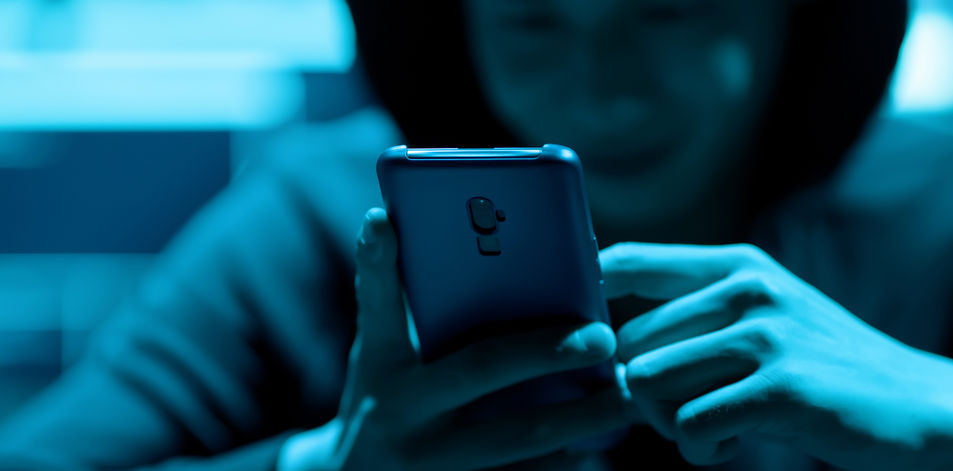InfoGuard AG (Headquarter)
Lindenstrasse 10
6340 Baar
Switzerland
InfoGuard AG
Stauffacherstrasse 141
3014 Bern
Switzerland
InfoGuard Com-Sys GmbH
Frankfurter Straße 233
63263 Neu-Isenburg
Germany
InfoGuard Deutschland GmbH
Landsberger Straße 302
80687 Munich
Germany
InfoGuard Com-Sys GmbH
Am Gierath 20A
40885 Ratingen
Germany
InfoGuard GmbH
Kohlmarkt 8-10
1010 Vienna
Austria
Stalkerware – when the smartphone turns into a bugging device

Complete digital privacy has long since been an illusion. Surveillance is something we face in many areas these days. It is no longer a secret that our smartphones or digital speech assistants are also eavesdropping on and observing our activities. Moreover, this is more or less accepted, because often we have no choice. However, targeted, covert espionage – like stalkerware – is terrifying for everyone. This article explains how stalkerware works, the legal situation and how you can protect yourself against it.
Stalkerware is the term used for spy apps and programmes that are secretly installed on smartphones by third parties and which record and store activities in the background. It also makes data transfer easy – be it photos, documents, (encrypted) chat logs, e-mails, calls, passwords, contact details, browser histories, locations, etc. Typically, for this kind of data it is easy to find buyers for on the Darknet. Some apps even allow remote access and, for example, the microphone to be switched on. This allows the perpetrators to virtually follow our entire lives live on the monitor and misuse data, for example for the purposes of blackmail.
The thing is that this technology is cheap and easily obtainable, even in official app stores. You don't have to be a hacker to install software like this, that's why it is often used to spy on (ex-) partners. The software is taking stalking into the digital world with endless possibilities; much to the distress of the victims.
Legal or illegal, that is the question
Different studies have shown that stalkerware is on the increase. Avast, for example, found that around 55% more spy apps were installed during the Covid-19 pandemic. Data from Kaspersky also show that in 2020, around 54,000 smartphones worldwide were illegally hacked with stalkerware – and the trend is upwards, with the number of unreported cases certainly even higher.
Under Swiss criminal law and data protection laws (DSG/GDPR), surveillance is not permitted without the consent of the person being monitored. However, perpetrators know endless loopholes, which is why there is often little evidence for it. But who is actually responsible? Solely the perpetrators or stalkers, or the app and smartphone manufacturers, or is the victim even partly at fault? Unfortunately, it is impossible to answer these questions unequivocally. Fundamentally, app manufacturers are not acting unlawfully. Monitoring apps are mostly advertised for monitoring children, for example, to track where they are at any given time, which of course can be done for their protection. As long as the terms of use are worded correctly and consent is given, the providers are off the hook. At least almost off the hook, because some advertise in the small print that partners can also be monitored, and not all apps that are installed are displayed as icons, so they are concealed.
App platforms have also recognised the problem. They say that suspicious apps are regularly removed from the store. Google, for example, announced last autumn that it would no longer show ads for suspicious apps. But here, too, there are ways to get around it. On the one hand, as already explained, child-monitoring apps are legal. On the other hand, app providers can use search engine optimisation to publicise their software despite the advertising ban. So, some app manufacturers hide invisible HTML code blocks on their website that are read by search engines but not displayed normally. For example, one provider's source code says: Do you dream of secretly spying on your partner's phone to find out if they are two-timing you?
Where data protection is powerless
The revised data protection laws, both in Switzerland (DSG) and across Europe (GDPR), are intended to protect data subjects more effectively against data misuse in a number of different ways. This is why there are hefty fines if stalkerware is used without consent. Incidentally, this also applies to companies that monitor their staff without good reason, knowledge and consent – at least, that's the case in Switzerland. However, the theory and what happens in practice are contradictory. Manufacturers cannot be prosecuted if a) the stated use is legal, and b) if the DSG or GDPR do not recognise manufacturer liability for data protection contracts. On top of this, most app providers are based in countries like India and China, which are outside the jurisdiction of the DSG/GDPR. Last but not least, many data subjects don’t even notice stalkerware, and if there is no plaintiff, no judgement can be handed down.
How to spot stalkerware
As we have already said, stalkerware is not easy to detect. Nevertheless, there are some signs you can follow if you are suspicious.
- Check which apps are using the highest amount of resources (battery, data usage).
- Switch off Wi-Fi, mobile internet and geolocation. Now you can check if there are apps that are still consuming data and accessing your location, and which apps these are.
- Check your access permissions, as this can potentially allow apps to change settings on their own.
- Activate push notifications for app activities that you do not trust or are not familiar with.
- Install virus protection. For example, we recommend the free Sophos Intercept X app. Among other things, it can detect stalkerware and identify which apps or background applications are suspicious.
- Specific software will help you find out whether your smartphone may have been hacked. On the iPhone, there is the "SystemGuard" app, which shows whether a jailbreak has been secretly carried out. For Androids, the counterpart is "Root Checker". This app shows whether the smartphone has been rooted; or in other words, whether someone has secretly been able to access it.
- Protect your smartphone from unauthorised physical access (code, touch or Face ID), because apps can be installed in no time at all.
If you are very suspicious, do not uninstall the app immediately. For one thing, this is the only way law enforcement can track the surveillance and take legal action, and secondly, the perpetrator may notice, which will only make the problem worse.
If you want to learn more about topics such as data protection, mobile security and the latest developments in the world of security, be sure to subscribe to our blog updates!
Blog

Agentische KI im Angriff: Wie Human-AI-Teaming die Cyberabwehr neu ausrichtet

Zero Trust 2026: Diese 4 Schritte funktionieren in IT, OT & Cloud-first


